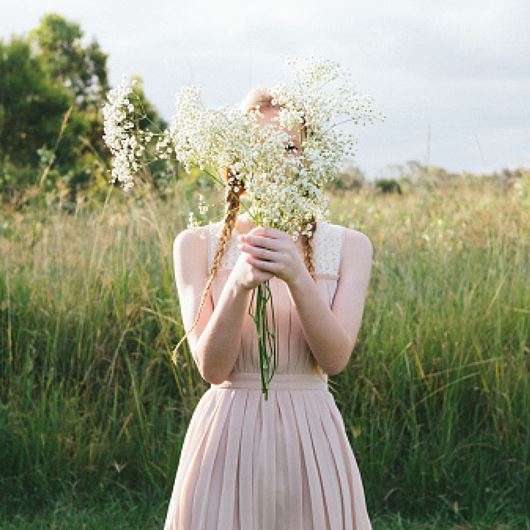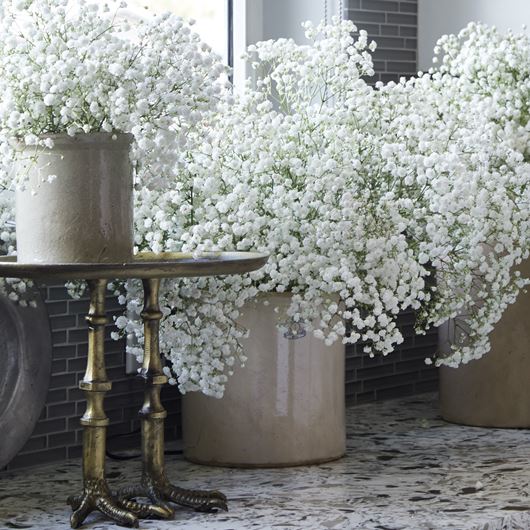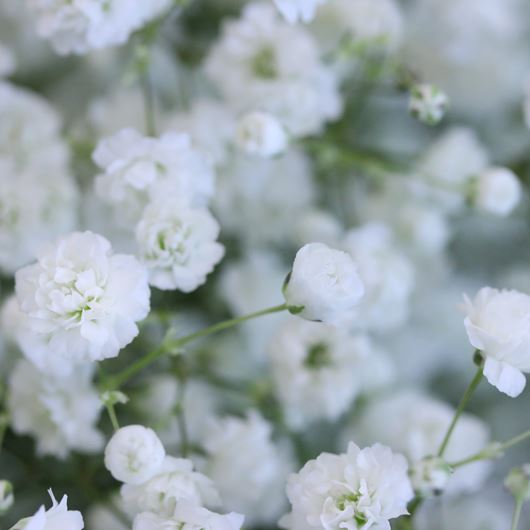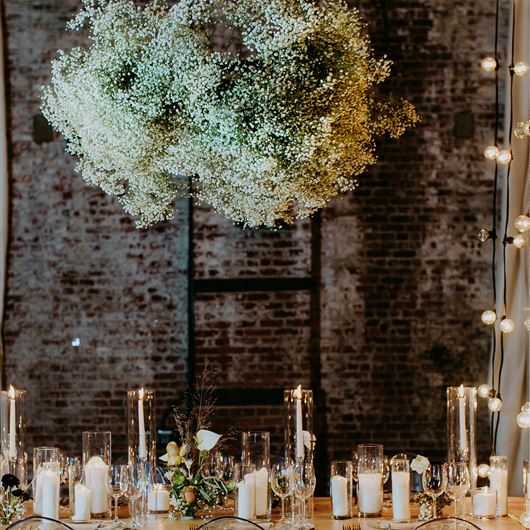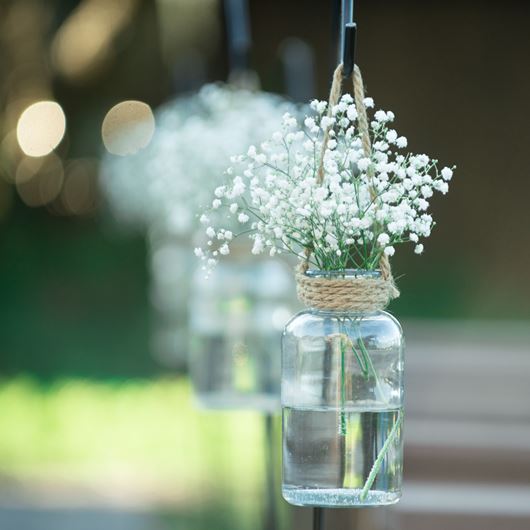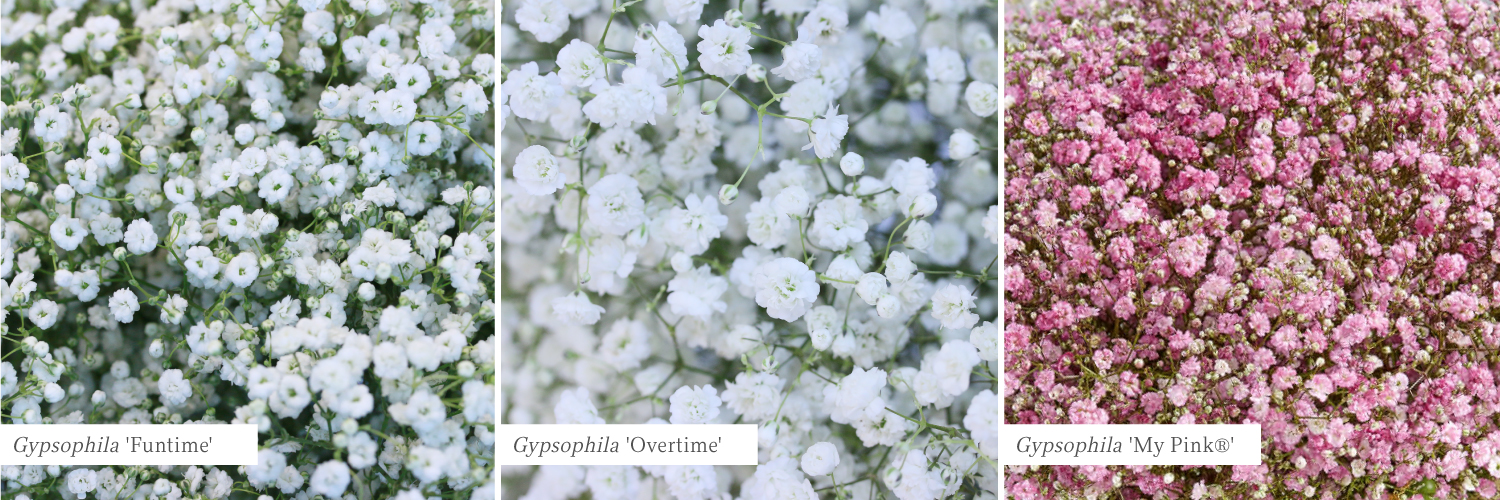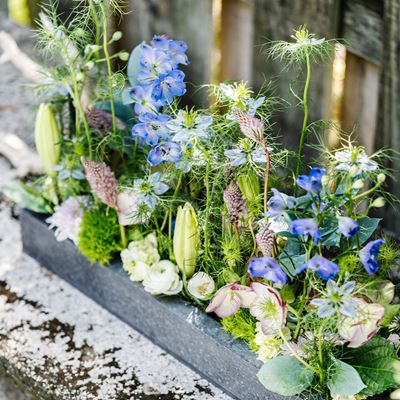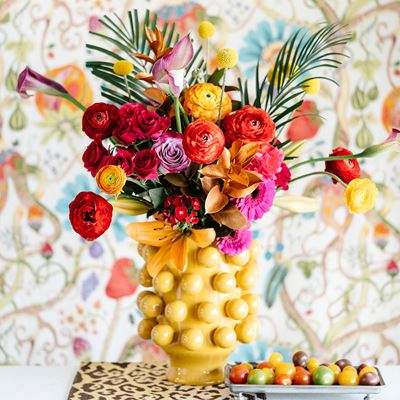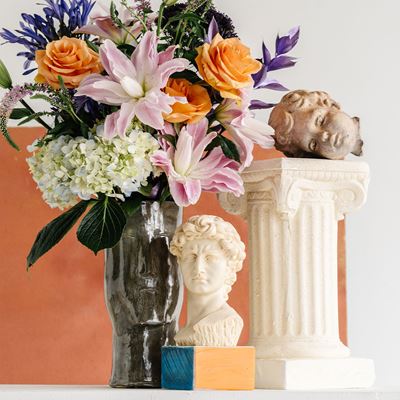Completing our 2023 lookbook series, our sixth and final trend, ATMOSPHERIC, pays homage to our planet's habitats at large. This trending macro view gathers an immersive palette of cool hues, borrowed from the oceans and forests, and pairs it with glowing bright white.
Once the Cloudy Rose Filler, Now a Fashion Flower Icon
Oh Gypsophila, the uncontested cliché of the flower world. It feels as if it's been featured in every bridal bouquet and Valentine’s Day arrangement since the dawn of time, but we can never discredit gyp’s ultimate claim to fame.
One of the world’s most iconic wedding flowers, Gypsophila (commonly referred to as baby’s breath or gyp) is known for its voluminous, cloud-like texture, ethereal aura and rich symbolism. These elements—combined with its prime availability and budget-friendly price point—are what make gyp a treasured filler (or focal) flower for use in wedding work and beyond.
Cultivated both as an annual and a perennial, Gypsophila is a member of the Caryophyllaceae family and its genus consists of approximately 150 species. It is native to Eurasia, but has also been found in Australia and Africa. For the fun fact lovers: the genus name (which roughly translates to "lover of chalk" in Greek) comes from Gysophila’s preference for calcium-rich soils, which often contain the mineral gypsum. Today, only a handful of cultivars account for more than 90% of the Gypsophila used by designers across the globe, with 'Million Stars', 'Perfecta', 'Overtime', 'Funtime' and 'My Pink' cultivars taking center stage as industry favorites.
Gypsophila plants typically grow between 60-92 cm in height and feature blue-green, lance-shaped leaves. They are most notably recognized by their slender, intricately branched stems. Topping each of these branches are numerous clusters of small, delicate florets, whose bloom size may vary among cultivars. The florets are usually brilliant white in tone, but naturally cream and pink varieties—although uncommon—do exist. Extensive batches of these blossoms are what provide Gypsophila with that airy, cloud-like form, creating a misty appearance from a distance.
As one of the top filler flowers in the cut flower industry, Gypsophila is a staple accent in wedding bouquets and centerpieces. Many brides select it not only for its wispy beauty, but also its symbolic meanings. In the language of flowers, Gypsophila represents purity, innocence and everlasting love—all universal emotions shared between couples on their special day. Aside from their use in fresh designs, Gypsophila also works exceptionally well when dried.
This time-tested favorite will never grow out of style, and no matter the occasion, Gypsophila will lend a romantic and sophisticated touch to any floral arrangement.
FUN FACTS
• Gypsophila comes from the Greek words “gypsos” (meaning chalk) and “philos” (meaning beloved). It references the plants’ preference for soils with high concentrations of gypsum, a mineral composed of calcium.
• Only a few of the genus’ cultivars account for more than 90% of the Gypsophila found in florist shops today. These include 'Million Stars', 'Perfecta', 'Overtime' and 'Funtime' varieties.
• Gypsophila is one of the world’s most widely used fillers among floral creatives, especially in wedding designs. These flowers are often featured in bridal bouquets, centerpieces and boutonnières. In other decorating projects, their most classic partner is the rose.
• Some species of Gypsophila are used in herbal medicines; when extracted from these plants, chemical compounds called saponins have the ability to attack and break down certain cancer cells. Studies show that these saponins can potentially boost the efficiency of anti-cancer drugs by an exponential amount!
• With their high saponin concentration, Gypsophila also has other commercial applications, such as their use in the production of photographic film. Their detergent qualities make them a practical ingredient in soaps and shampoos as well.
• Gypsophila is edible and has been used in numerous cuisines. It is known to provide a mild, slightly sweet flavor when placed as a garnish on desserts and herbal cheese.
• In the language of flowers, Gypsophila symbolizes innocence and eternal love; with these meanings, it’s easy to see why it’s such a beloved wedding flower!
• Aside from their use in weddings, Gypsophila flowers are also a staple for celebrating baby showers and newborn babies. Their delicate, white petals are correlated with the pureness and innocence of children. This explains the common name, baby’s breath, which is derived from this application.
Annual Gypsophila (ex. Gypsophila elegans) features amply-branched stems with blue-green foliage and typically grows up to 50 cm in height. Their florets are typically larger and more open than the perennial form used by designers.
Perennial Gypsophila (ex. Gypsophila paniculata) is similar in appearance to G. elegans; however, these species boast a heftier rootstock and grow to approximately 100 cm in height. Its florets generally range from white to pink shades. G. paniculata cultivars include such popular varieties as white-flowered 'Million Stars' (small, semi-double blooms), 'Funtime' (small blooms), 'Overtime' (large blooms) and 'Xlence' (large blooms); naturally pink-flowered types include 'My Pink®' (large, double blooms) and 'Pink Fairy' (large, double blooms).
Gypsophila is only one of the Flowers We Love, and we would love to share them all with you. Whether flowers are your passion or your profession, this living encyclopedia will expand your knowledge and entice your imagination. Visit often as we add entries to keep your floral skills growing.
